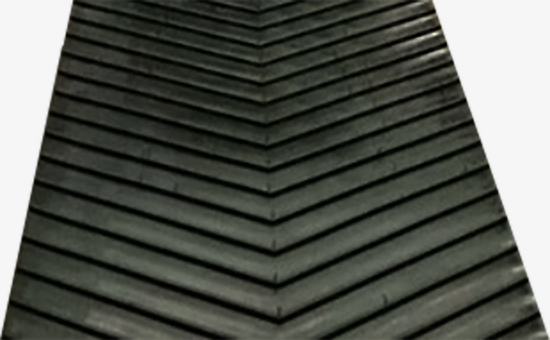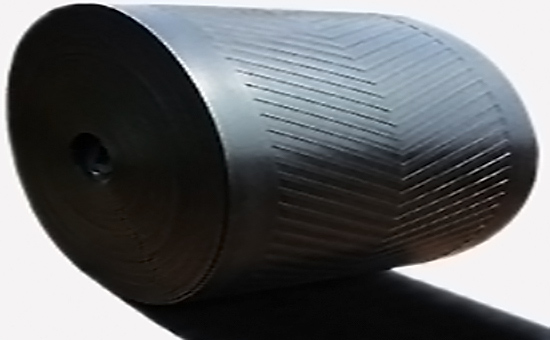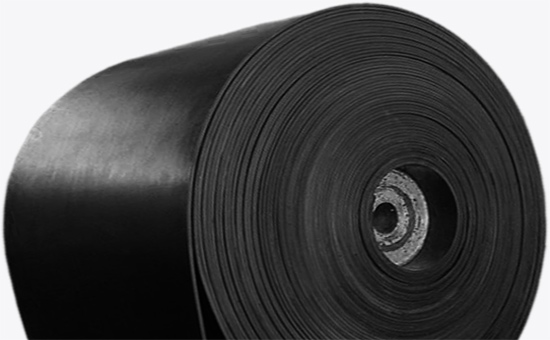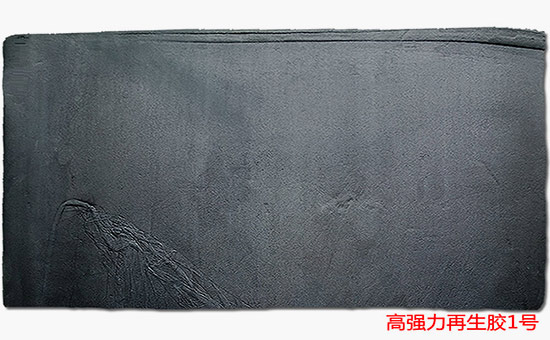
The function of rubber conveyor belt cloth layer wiping adhesive is to glue the core canvas layer into a whole. It is required to have good adhesion and fatigue resistance to the core material, as well as sufficient plasticity (plasticity 0.5-0.6) and process properties such as scorch resistance. Conveyor belt rubbers are generally made of natural rubber or a combination of natural rubber and styrene butadiene rubber; Properly mixing recycled tire rubber and reasonably designing the formula can effectively reduce the cost of raw materials while ensuring the performance of conveyor belt rubbers.
1. Reference formula for rubberized cotton canvas belt conveyor belt blended with tire recycled rubber

65 parts natural rubber, 70 parts recycled tire rubber, 4.5 parts zinc oxide, 2 parts stearic acid, 1 part antioxidant D, 25 parts carbon black N774, 70 parts heavy calcium, 2.5 parts pine tar, 15 parts petroleum asphalt, 0.6 parts accelerator M, and 3 parts sulfur; Total: 258.6 copies.
2. Formula for direct adhesion of nylon canvas to conveyor belt rubbers blended with recycled tire rubber
80 parts of natural rubber, 40 parts of recycled tire rubber, 10 parts of zinc oxide, 3 parts of stearic acid, 0.5 parts of antioxidant D, 0.5 parts of antioxidant H, 25 parts of carbon black N770, 12.5 parts of white carbon black, 6 parts of adhesive, 10 parts of pine tar, 1.5 parts of accelerator CZ, 1.5 parts of accelerator H, and 2.5 parts of sulfur; Total: 193 copies.

50 parts natural rubber, 40 parts oil extended styrene butadiene rubber, 20 parts recycled tire rubber, 10 parts zinc oxide, 3 parts stearic acid, 0.5 parts antioxidant D, 0.5 parts antioxidant H, 25 parts carbon black N770, 12.5 parts white carbon black, 6 parts adhesive, 10 parts pine tar, 2 parts accelerator CZ, 1.5 parts accelerator H, 2.3 parts sulfur yellow; Total: 183.3 copies.
3. Key points of formula design for rubber conveyor belt rubbers blended with recycled tire rubber
When rubber conveyor belt rubbers are blended with recycled tire rubber to reduce costs, the rubber content of the entire formula is generally controlled at around 50%. The rubbers for conveyor belts containing recycled rubber mostly use a sulfur accelerator system, with accelerator M, accelerator DM, and accelerator TMTD used alone or in combination. A small amount of TMTD can accelerate the curing rate; use accelerator CZ/H in conjunction with sulfur. Soft carbon black, such as semi reinforced carbon black, is often used for rubberized and reinforced filling of conveyor belts.

When using natural rubber/recycled tire rubber, natural rubber/styrene butadiene rubber/recycled tire rubber to produce rubber conveyor belt rubbers, the softening and plasticizing system can also use coumarone resin or petroleum resin, and appropriately increase its dosage to further improve the adhesion of rubber conveyor belt rubbers.
In actual production, different parts of the rubber conveyor belt such as covering rubber, buffer rubber, cloth layer rubber, etc. can be appropriately mixed with recycled tire rubber. Reasonable control of the amount of recycled rubber 2SLY321 and appropriate adjustment of the formula can further optimize product quality while reducing the manufacturing cost of the conveyor belt.
Exclusive original article [commercial authorization] reprint, excerpt and excerpt in any form are prohibited without written authorization. Focus on Hongyun rubber: learn the process formula and raw material technology of producing rubber products from recycled rubber to help you reduce costs and increase profits